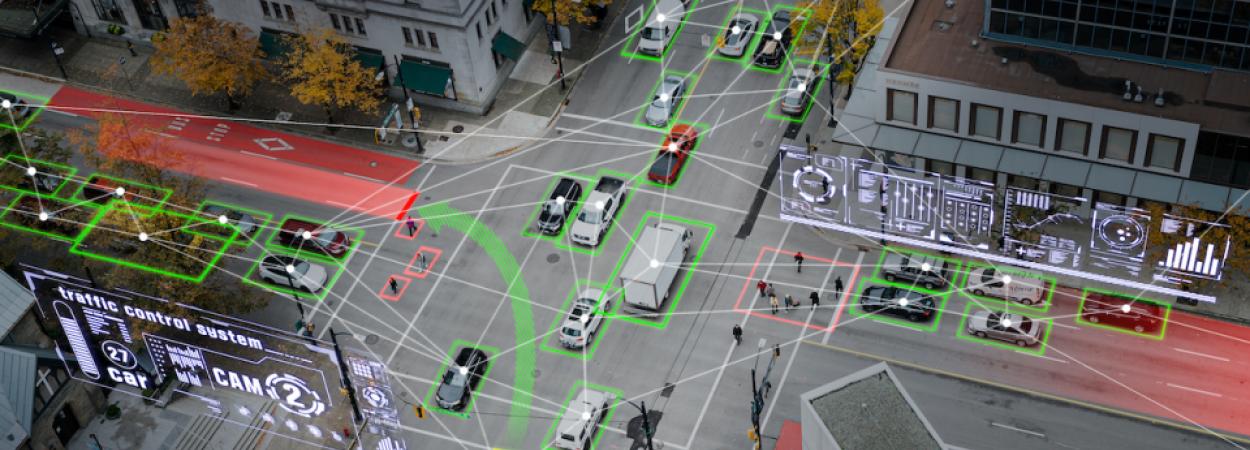The transportation safety crisis in America persists. People walking and riding bikes are more at risk than ever of being injured or killed, and those who manage transportation systems—in our case, State Departments of Transportation (DOTs) and tribes—are in urgent need of more and better data to make walking and bicycling safer and more attractive.
Data can be a powerful tool for agencies in determining which bicycle and pedestrian infrastructure projects are most critical. Decision makers are pushing to increase walking and cycling rates to reduce greenhouse gases and other pollutants. Transportation engineers and planners are looking for solutions to achieving vision zero goals and making all road users feel safer while walking, cycling, and rolling. Health professionals see active transportation for daily needs as a long-term solution to a wide range of chronic diseases. Significant new sources of infrastructure funding can support investments that could help reverse the trend of increasing pedestrian and bicyclist injuries and fatalities and the stagnating trends of cycling and walking for transportation. Despite the clear need, decision makers and professionals do not always have the data and tools necessary to make informed decisions.
A research team led by Portland State University has been contracted by the National Cooperative Highway Research Program (NCHRP) to create a playbook for DOTs and tribes to implement the most effective data solutions. At PSU, the Transportation Research and Education Center (TREC) is teaming up with the Institute for Tribal Government (ITG) to lead the project. The rest of the project team comprises Toole Design Group, the Highway Safety Research Center at University of North Carolina, Sheri Bozic of EarthAlive Consulting, Dr. Nick Ferenchak of the University of New Mexico, and Elizabeth Stolz (The Traffic Data Consultant).
The Institute for Tribal Government (ITG) at PSU serves elected tribal governments from across the nation and also provides training and technical assistance on energy, water, transportation and other infrastructure projects. By joining forces with the Institute, we bring that expertise together with TREC's experience in delivering ground-breaking active transportation research and successfully translating research into resources that advance practice. The PSU members of the project team include Jennifer Dill, Nathan McNeil, Sirisha Kothuri, Tammy Lee and Basem Elazzabi of TREC, and Direlle Calica and Serina Fast Horse of the ITG.
Read more about the NCHRP project: State DOT and Tribal Use of Active Transportation Data: Practices, Sources, Needs, and Gaps
WHY ARE DATA SOLUTIONS NEEDED?
The world of transportation data is a wild one. Pockets of people all over the country are doing innovative things to clean, maintain, update, store, and publish all sorts of metrics, yet many of these groups are isolated from one another, and their data are not always standardized or easily transferable.
At Portland State University we have a transportation data lake, PORTAL. PORTAL has evolved from archiving a single source of data from one agency to multiple sources of data from multiple regional agencies, and is now the nation’s largest publicly available transportation data archive. We also maintain BikePed Portal, a nationwide database for standard non-motorized counts.
These initiatives, aiming to normalize the collection, archiving, and sharing of data and information, make PSU uniquely positioned to meet the project's objectives. The overall goal of this NCHRP project is to develop universal data standards and help the various entities combine and compare their data, making it more useful and accessible for practitioners. Using the image of data "lakes," the analogous goal of this NCHRP project might be to raise the water level – or perhaps dig canals – anything to connect the different entities who could be helping each other.
WHAT TYPE OF DATA?
How many people ride a bicycle or walk on major streets? Planners are challenged to predict travel volume trends, when active transportation volume data are unavailable.
Agencies generally have access to records of how many pedestrians and cyclists are killed by motor vehicles (though with some level of error), but usually lack similar data for injuries. Improved data to measure non-fatal injuries would vastly enhance the validity of the tools currently being used to prioritize safety investments.
State DOTs and tribes need up-to-date geospatial data that indicates where sidewalks, bicycle facilities, accessible public transportation stops and stations, and other infrastructure are located. For active transportation purposes, the condition of the infrastructure is important, including when considering Americans with Disabilities Act requirements and Public Rights-of-Way Accessibility Guidelines.
They're also looking for innovative use cases that could prove scalable. How are jurisdictions currently sharing data? What nontraditional or unusual data sources are being adapted into active transportation analyses? Where, specifically, are resources flowing? Just how many datasets are out there anyway? The research team will gather information to answer questions like these on data standardization, sharing, and governance.
WHAT TYPE OF SOLUTIONS?
The primary objective of this project is to develop a playbook of strategies for state DOTs and tribes to make effective use of active transportation data. A second objective is to draft data standardization formats that will improve data quality and facilitate data sharing nationally. To do this, the team will use a research approach that:
- understands and critically examines how state DOTs and tribes are currently collecting, storing, using and sharing data;
- identifies data sources and gaps;
- assesses the state of the practice regarding pedestrian and bicycle injury and death reporting and integration systems;
- develops recommendations how to integrate, improve, and develop the data and tools to fill those gaps; and
- identifies best practices and case studies of how to achieve those recommendations.
With an increased focus on "open data," agencies need to establish policies and procedures for sharing data outside the agency, with the general public as well as other agencies. In many cases, it is necessary and advantageous to link different datasets. For example, the PSU team has developed a method for integrating emerging sources of bicycle activity data (Strava, StreetLight, and bikeshare) with conventional demand data (permanent counters, short-duration counts) to derive bicycle volumes on a network. This data fusion achievement is a useful example of how to combine multiple data sources and create more sophisticated models.
By prioritizing data needs and gaps, this project will help DOTs and tribes effectively use evidence-based research to achieve their goals.
Photo by choi dongsu/iStock
Portland State University's Transportation Research and Education Center (TREC) is home to the U.S. DOT funded National Institute for Transportation and Communities (NITC), the Initiative for Bicycle and Pedestrian Innovation (IBPI), PORTAL, BikePed Portal and other transportation grants and programs. We produce impactful research and tools for transportation decision makers, expand the diversity and capacity of the workforce, and engage students and professionals through education and participation in research. To get updates about what's going on at TREC, sign up for our monthly newsletter or follow us on social media.




